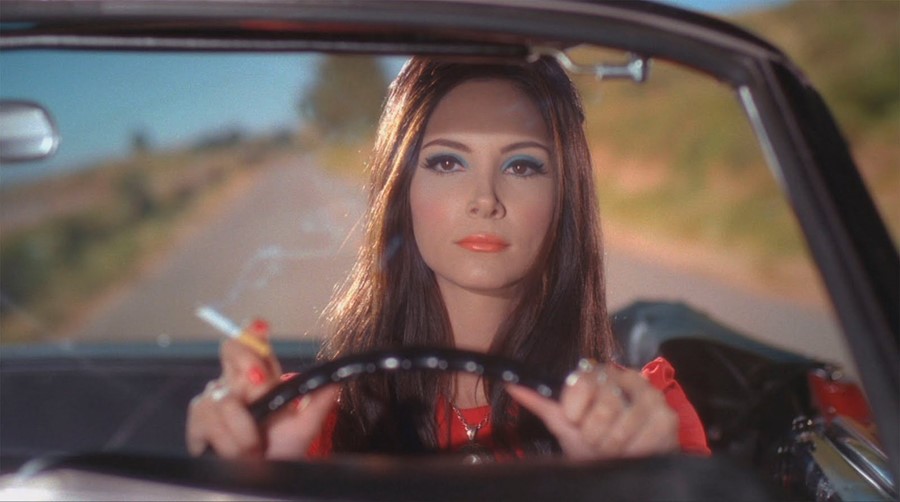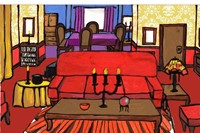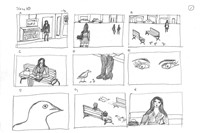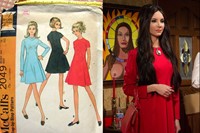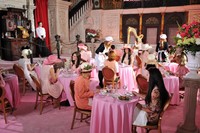Style, sex and sorcery combine in Anna Biller's sophomore thriller. Here, she sheds light on the movie's inception and feminist codes, ahead of its screening at London's FrightFest
Anna Biller makes films that can kill you with one look. Nine years ago, her movie Viva, a tale of promiscuity in 1970s Los Angeles suburbia, earned her a reputation as a starlet of underground Hollywood. The film is blessed by the striking, celluloid beauty of 35mm, which is perfectly offset against the kitsch costumes of Biller’s characters and the vivid artwork that adorns the walls of their abodes – all meticulously crafted by the director herself.
It should come as no surprise then that her sophomore feature The Love Witch gets a similarly stylish treatment. The story follows Elaine, a gorgeous sorceress wandering across the Californian coast, leaving the stunned cadavers of male lovers in her wake, and is by turns a razor sharp American satire and a blood soaked slasher. Set in a strangely ambiguous era, it toys with ideas of sexual prowess and feminist ideals that feel contemporary, but are delivered under a fantastical Technicolor spotlight.
Ahead of The Love Witch’s Discovery screening at FrightFest 2016, Biller spoke to AnOther about how she created a twisted, yet intelligent piece of statement cinema.
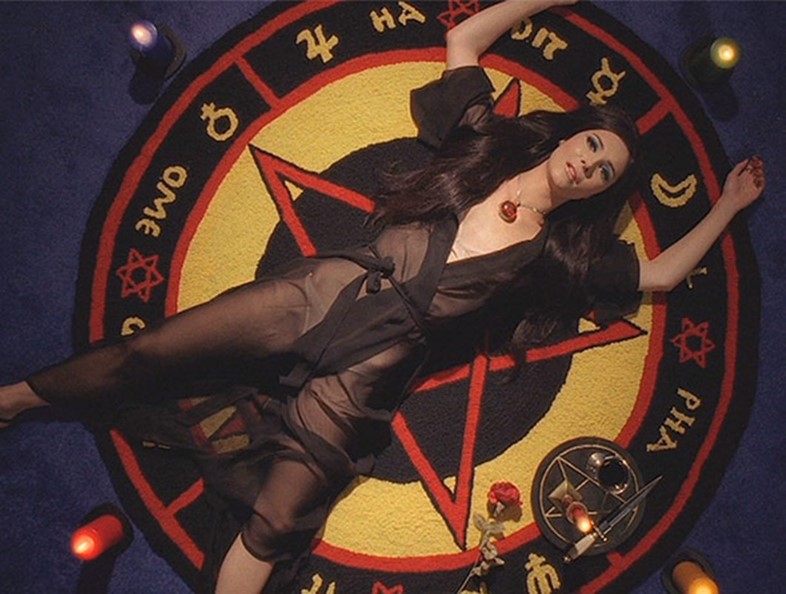
On making a feminist film…
“Saying that a woman’s sexuality is a source of power isn’t anything new. That women aren’t owning their sexual power because they think it demeans them is a complicated social phenomenon, but it doesn’t take away from the truth of it. Elaine uses her beauty as a strategy to attain the love and respect of men, but it backfires. That’s not because her strategy is unsound, but because that’s not how patriarchy works. The men in the film will never give her the love and approval she craves, because they are very focused on marinating in their own social power.
We live in an age in which masculinity is admired [so greatly] that many women (and men) have come to think that being like a man is the way to be a feminist. Only when women are admired as women, for all of the natural qualities they possess, can we begin to sort out this gender mess. The fact that people will yell at me for even suggesting that there is a thing such as natural femininity is part of the problem! I want to bring back dignity and power to female glamour – everything in my films tries to [convey this].”
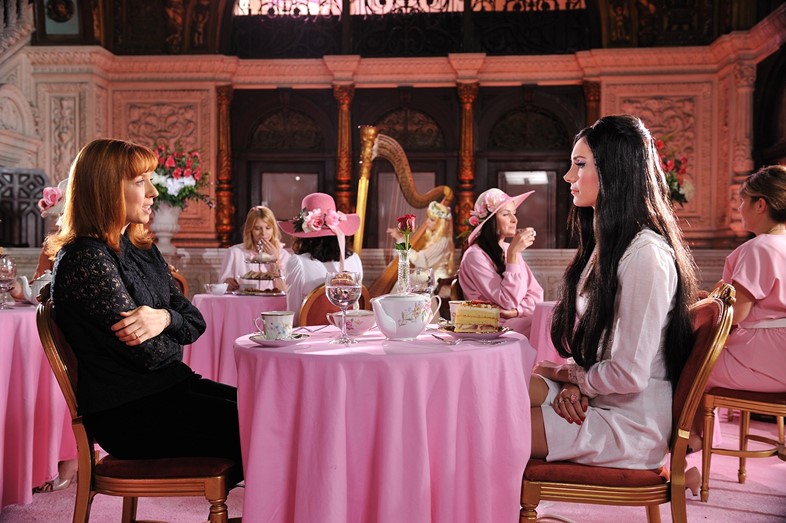
On the film’s relationship with colour and gender…
“I watched a lot of classic films shot in Technicolor and one of the things I loved the most was the use of colour symbolism, so I tried to emulate it. The dress in the opening scene is like the ‘harlot-red’ dress Grace Kelly wears in Dial M for Murder as she’s cheating on her husband. That’s the same thing I did with Elaine’s dress.
In the pink tearoom, Trish (one of Elaine’s few friends in the town where she settles) is already wearing peach when we first meet her, but Elaine changes into pink and peach to fit in as everyone else in the tearoom is wearing similar colours. It’s to symbolise femininity, and almost feels like an all-enclosing womb. That’s why it’s so surreal when Richard (Trish’s husband – the only man in the room) suddenly appears. All of the other colours I used were symbolic in some way as well.”
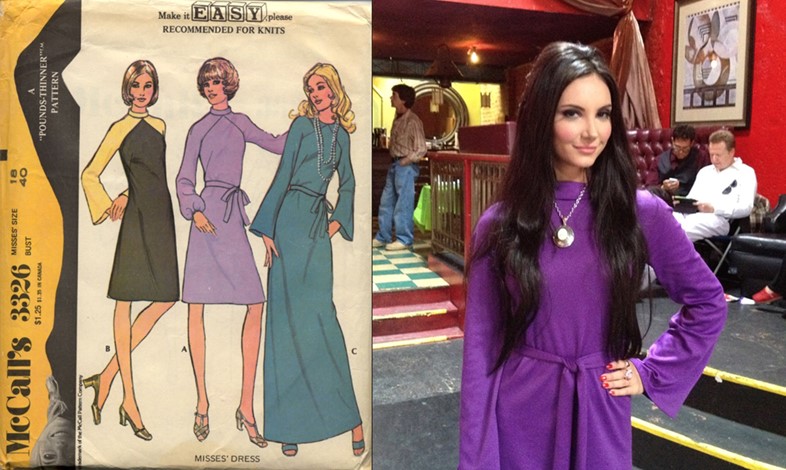
On discovering her Love Witch, Samantha Robinson…
“Samantha is a really exciting actress. She’s able to remain true to herself while collaborating with others, too. We watched a lot of classic movies about sociopathic women, sirens, and femmes fatales. From all of that dialogue, she created the character of Elaine. [Samantha] is so naturally expressive that she can do very little and it can be exciting on screen, but I think what’s most powerful is that we created a character that represents of a lot of young women that we don’t see in movies anymore: a mix of innocence, hidden hostility, and rapier-like intelligence that so many young women have.”
On the film’s ambiguous time setting and filming on 35mm…
“The film is set in the modern-day, not in the past. Elaine is a self-styled 60s sex siren who is really into her retro clothing and drives a retro car. Other than that, all of the visual details are timeless or modern. The vintage feel is mainly created by the lighting and set design. I love 35mm. It captures light in a breathtaking way and is easier to work with, especially in post, if you know what you’re doing!”

On sourcing the film’s inspiration…
“I watched all of the films I could find about women who are driven crazy by being women. Joseph Losey’s Secret Ceremony, because Elaine is sort of a mix between the two women in the film – the harlot and the waif – who both have fragile identities created by male abuse. George Romero’s Season of the Witch was another, because it’s the only other film I’ve seen which deliberately combines feminism and witchcraft.”
On defining The Love Witch’s genre…
“I don’t consciously work within any genre, although I often get labeled a ‘genre director’. I’m very conscious of creating certain moods to enhance drama, though. I want a sexy scene to feel sexy for instance, a scary scene to feel scary, and a love scene to feel romantic. But I don’t think that means I’m working in erotica, horror or romantic genres, it just means I’m good at creating atmosphere.”
The Love Witch screens at FrightFest on August 27. Buy tickets here.
